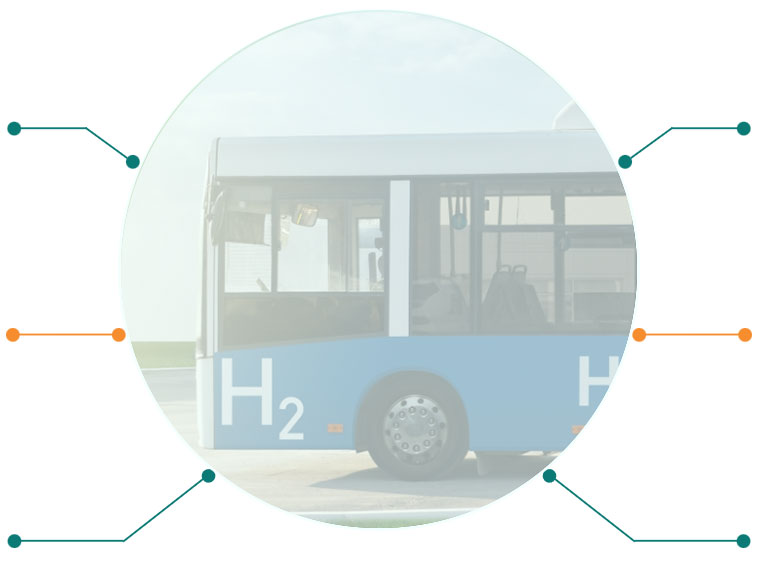Solution Overview
The widespread adoption of Fuel Cell Electric Vehicles (FCEV) and Hydrogen Internal Combustible engines can drive the world’s shift to green energy, but it needs advanced sensing technologies to ensure passenger and driver safety. However, existing solutions are neither built to withstand the harsh temperatures nor the wear and tear of vehicle operations.
This is where we come in. Our miniaturized sensors can fit the most critical areas, with a best-in-class leak detection response rate of less than 500 ms at 1ppm hydrogen. With a self-cleaning design and zero cross-reactivity with other gases, they offer unmatched precision and durability even in the most extreme temperatures.
Our team of experts works closely with you to ensure the ideal configuration and strategic sensor placement to serve your needs while keeping costs low.
The 21 Senses Advantage
- Exceptional longevity in the face of high moisture and contaminant levels, thanks to self-cleansing and filtration
- Design analysis of vehicle for optimal sensor positioning to drive maximum safety
- Flawless operations in both low and high-temperature conditions
- Solid State – Up to 65°C
- MEMS Sensor – Upto 200°C
- Built to withstand high levels of hydrogen exposure
- 1PPM – >50,0000 PPM
- MEMS – 100% hydrogen exposureC
- Fastest response time at less than 200 ms with zero cross-reactivity with other gases)
- Ultra-compact size seamlessly fits into any vehicle design
